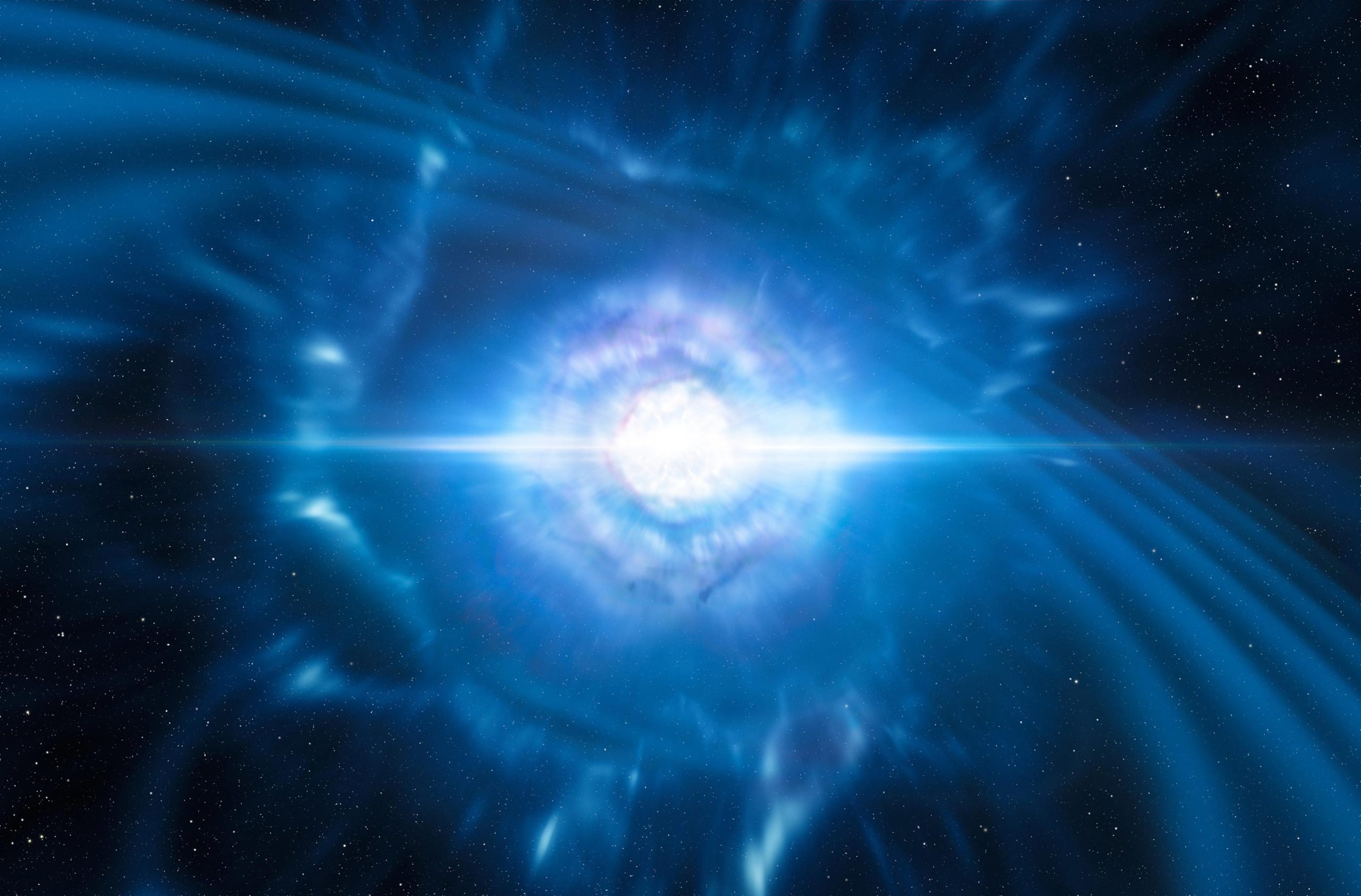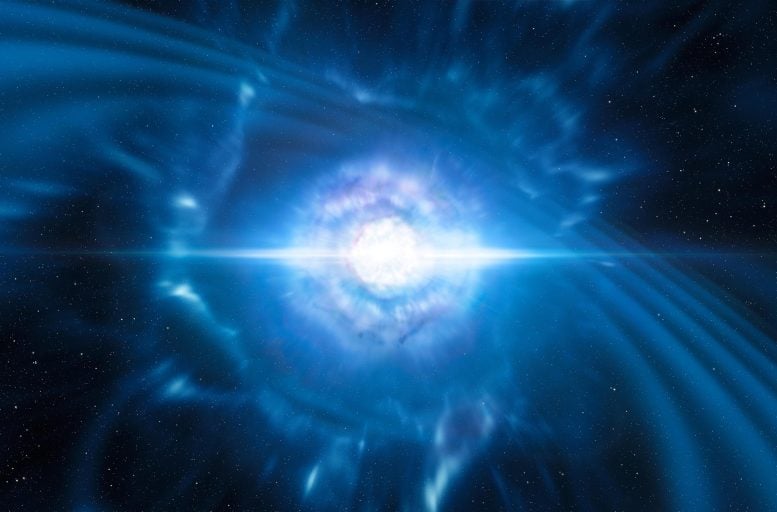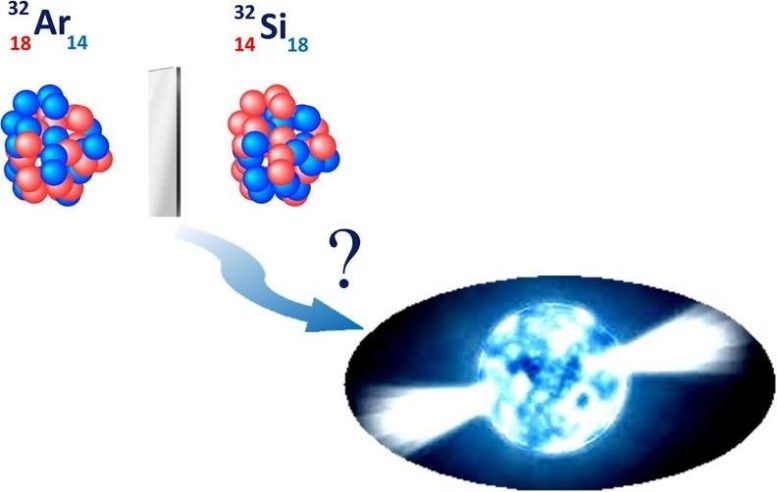

Using precision laser measurements, scientists have quantified the nuclear radii of silicon isotopes to improve nuclear theories and our understanding of neutron star matter.
These findings contribute significantly to both nuclear physics and astrophysics, providing insights into the structure of dense cosmic objects.
Isotope Shifts and Nuclear Radius Measurements
Adding or removing neutrons from an atomic nucleus results in changes in the size of the nucleus. This in turn causes tiny changes in the energy levels of the atom’s electrons, known as isotope shifts. Scientists can use precision measurements of these energy shifts to measure the radius of the nucleus of an isotope.
In this research, scientists made laser-assisted measurements of the nuclear radii of the stable silicon isotopes silicon-28, silicon-29, and silicon-30. They also measured the radius of the unstable silicon-32 nucleus, which has 14 protons and 18 neutrons. The researchers used the difference between the radius of the silicon-32 nucleus and its mirror nucleus, argon-32, which has 18 protons and 14 neutrons, to set limits on variables that help to describe the physics of astrophysical objects such as neutron stars. The results are an important step in developing nuclear theory, the study of nuclei and their components.

Challenges and Progress in Nuclear Theory
Despite progress in nuclear theory, scientists still face long-standing challenges in their understanding of nuclei. For instance, researchers have not connected the description of nuclear size with the underlying theory of the strong nuclear force. Moreover, it is not clear whether nuclear theories that describe finite atomic nuclei can provide a reliable description of nuclear matter. This special form of matter consists of interacting protons and neutrons. Nuclear matter includes matter in extreme conditions such as neutron stars. Precision measurements of charge radii—the radius of atomic nuclei—help solve these open questions.
Precision Techniques in Isotope Measurement
Researchers used laser spectroscopy measurements of atomic isotope shifts to measure the nuclear radius of different silicon isotopes at the BEam COoler and LAser spectroscopy facility (BECOLA) at the Facility for Rare Isotope Beams (FRIB) at Michigan State University. They performed the measurements for the stable silicon isotopes silicon-28, silicon-29, and silicon-30, as well as for the unstable silicon-32, which has 14 protons and 18 neutrons.
Implications for Nuclear Theory and Astrophysics
The results provide an important benchmark for the development of nuclear theory. The charge radii difference between the silicon-32 nucleus and its mirror nucleus argon-32, which has 18 protons and 14 neutrons, was used to constrain parameters needed to describe the properties of dense neutron matter within neutron stars. The obtained results agree with the constraints from gravitational wave observations and other complementary observables.
Reference: “Nuclear Charge Radii of Silicon Isotopes” by Kristian König, Julian C. Berengut, Anastasia Borschevsky, Alex Brinson, B. Alex Brown, Adam Dockery, Serdar Elhatisari, Ephraim Eliav, Ronald F. Garcia Ruiz, Jason D. Holt, Bai-Shan Hu, Jonas Karthein, Dean Lee, Yuan-Zhuo Ma, Ulf-G. Meißner, Kei Minamisono, Alexander V. Oleynichenko, Skyy V. Pineda, Sergey D. Prosnyak, Marten L. Reitsma, Leonid V. Skripnikov, Adam Vernon and Andréi Zaitsevskii, 16 April 2024, Physical Review Letters.
DOI: 10.1103/PhysRevLett.132.162502
This work was supported in part by the Department of Energy Office of Science, Office of Nuclear Physics’ SciDAC-5 NUCLEI Collaboration and by the National Science Foundation.